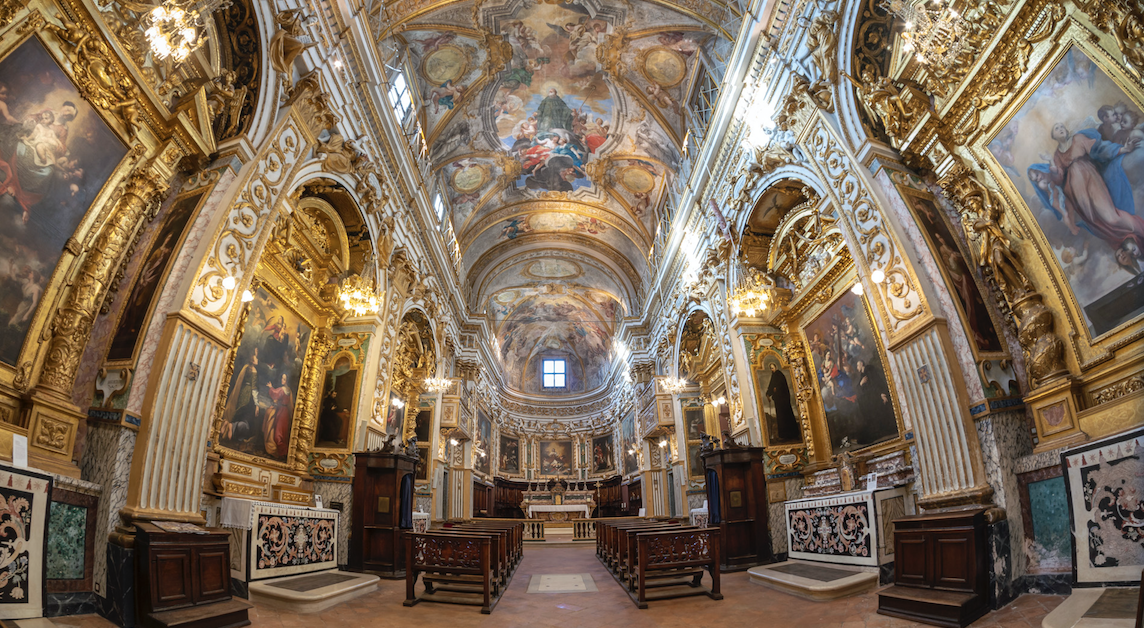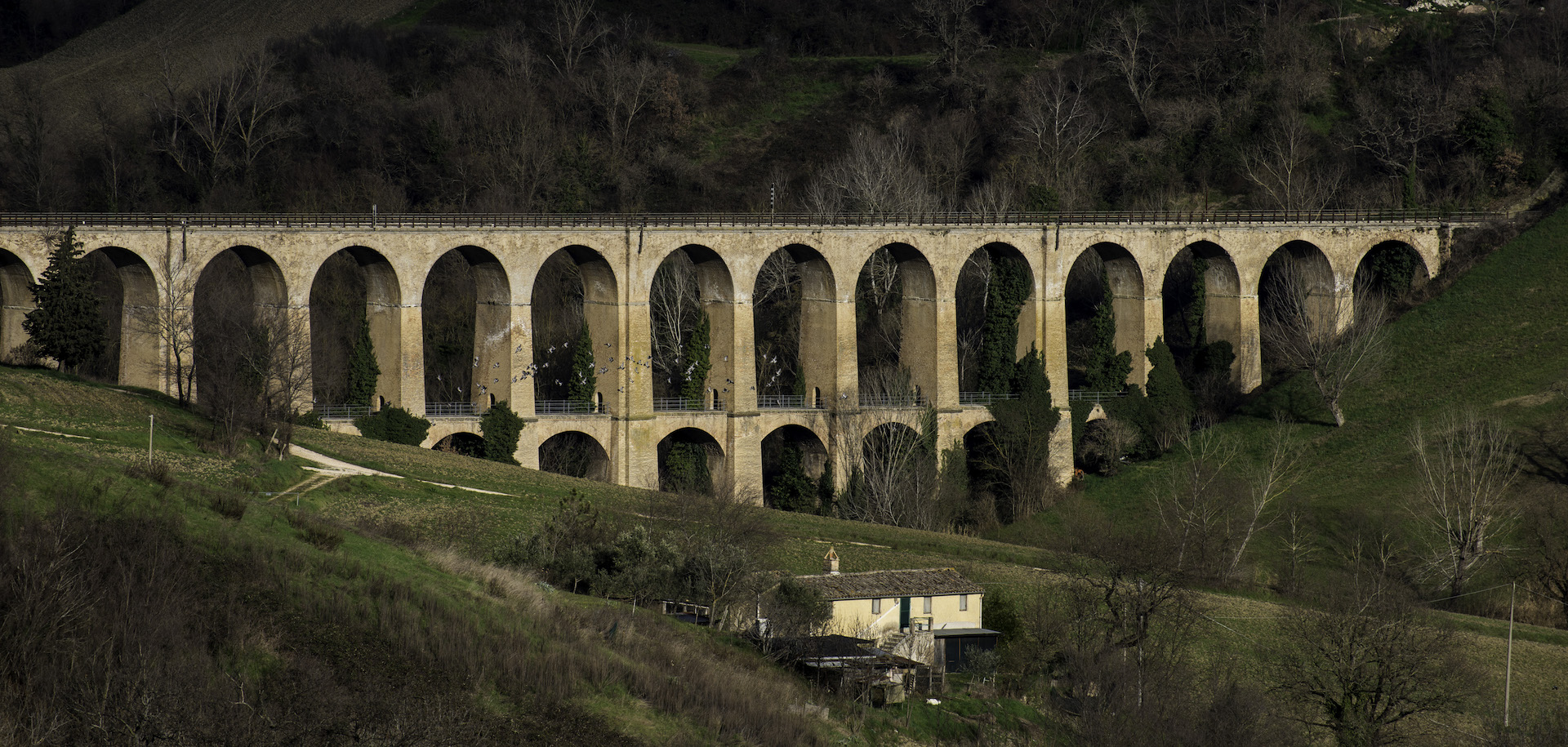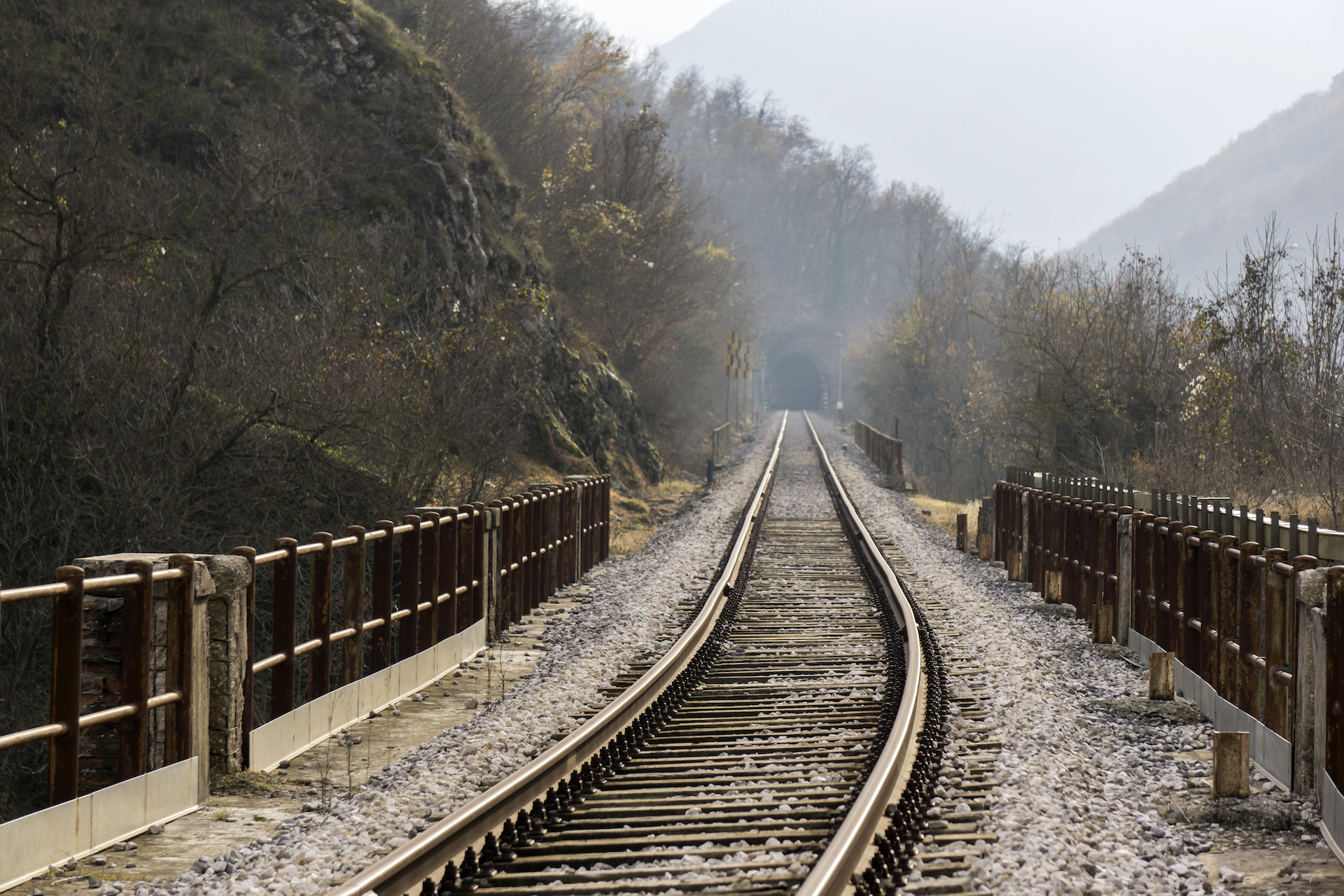Viewpoints and natural terraces
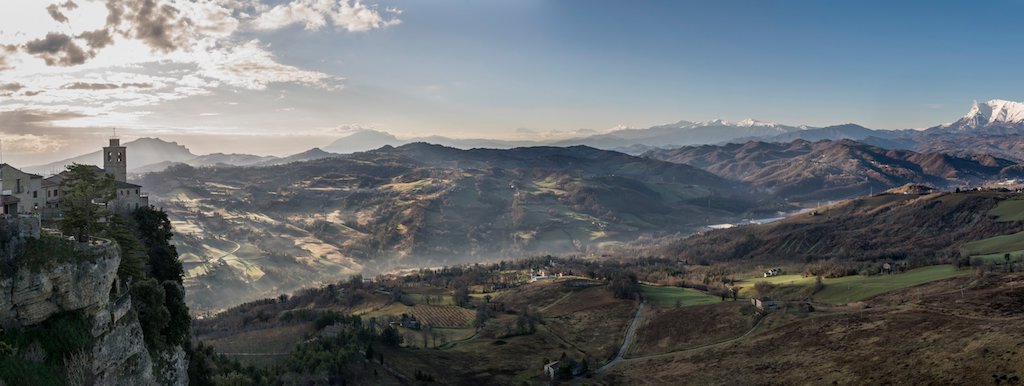
Whether in summer or winter, spring or fall; whether by the seaside or on the mountains, everywhere in Marche, north to south, the region offers innumerable panoramic spots and interesting places to enjoy, and where one can let his mind sweep over the beauties of the places. Along the path that follows, you shall be thrilled by the discovery of this region’s enormous patrimony, suggested for photographic tours and to those who, through an exciting naturalistic experience, wish to admire the local flora and fauna as well as to lovers of sports and open air activities.
PIetrarubbia in Montefeltro – the Renaissance landscapes admired from the castle.
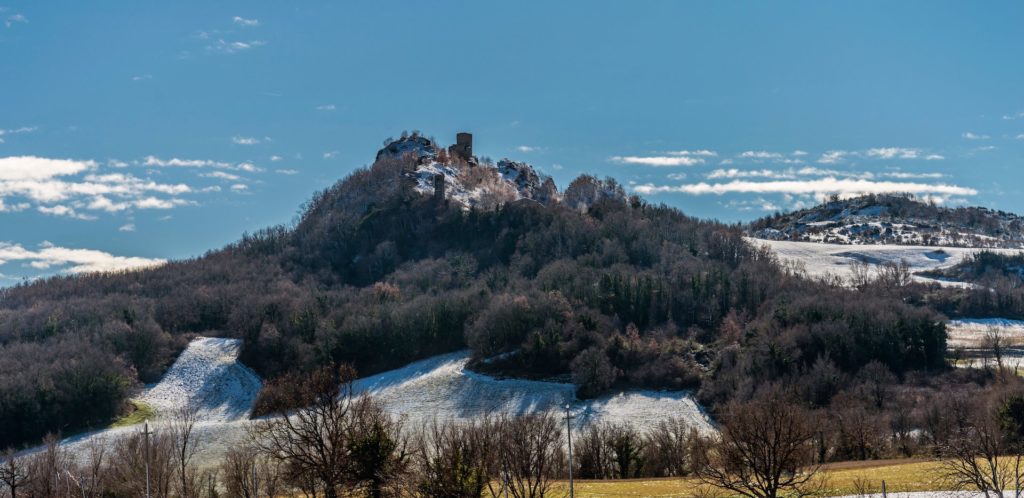
In northern Montefeltro, in the Pesaro-Urbino province, the hamlet of Pietrarubbia was recently restructured by sculptor Arnaldo Pomodoro. The vestiges of its Castle, an ancient property of the Montefeltro family, grab on a rock spur, called “Petra rubra” (red Stone) because of its reddish colour. The story of the place, an ancient mining area, brings visitors back to ancient times and to meet the people and the blacksmiths who worked for the dukes of Urbino. In front of the castle, on a rocky steep area with a fantastic panorama near a source of thermal water, stands the ancient Romanic church entitled to St. Arduino. In the hamlet there is the Capuchin convent where lived the “flying friar”, St. Joseph from Copertino. Worth visiting is St. Silvester’s, a 15th century church with a fine marble altar and a bronze rose window on the façade. Pietrarubbia is in the list of the most beautiful towns in Marche, set as it is in the rocks and by hills which give the place the charm of lovely landscapes.
Cingoli, the sweet hills.
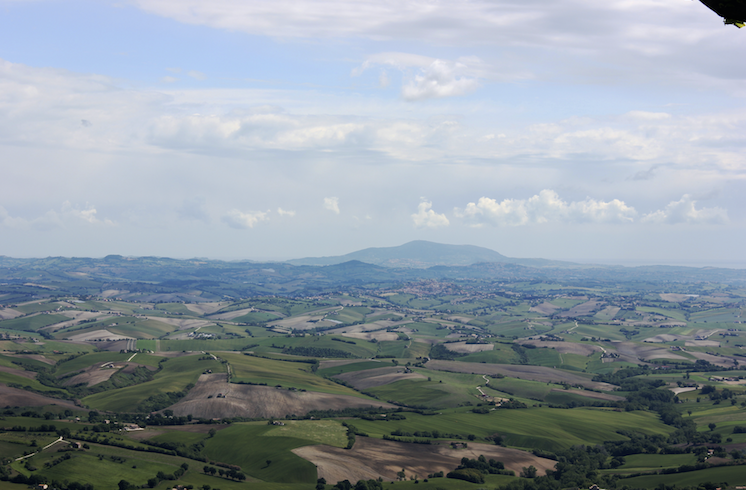
Cingoli, a municipality in the province of Macerata lying on the slopes of Mount Circe, has been called since ancient times “Balcony of Marche” because of its broad horizons offering the sight of charming landscapes, ranging from the Adriatic sea up to mount Conero; in the clearest days, the gaze may reach up to the Sibillini mountains and the coast of Dalmatia. The panoramic terrace is placed on the castle walls. Its territory is fit for tours on naturalistic paths which are rich with flora and fauna. Remarkable is the view upon the Cingoli (also called “Castreccioni”) lake, the largest artificial basin in Marche. Being rather high upon the sea level, in winter, especially when it is dressed with a white blanket of snow, Cingoli is the ideal place for visitors in search of emotions. Worth visiting, between the suggestive medieval alleys and the historical places of the town, are the Romanic-Gothic church of St. Esuperanzio’s Collegiate, dedicated to a saint who converted many heathens and heretics, and the sumptuous Cina della Scala palace, the residence of an illustrious noble family. Remarkable are the Maltempo Fountain and the “Cassero”, a fortress which was also used as a jail.
Mount Conero – The silence of nature: beaches, cliffs, Mediterranean vegetation
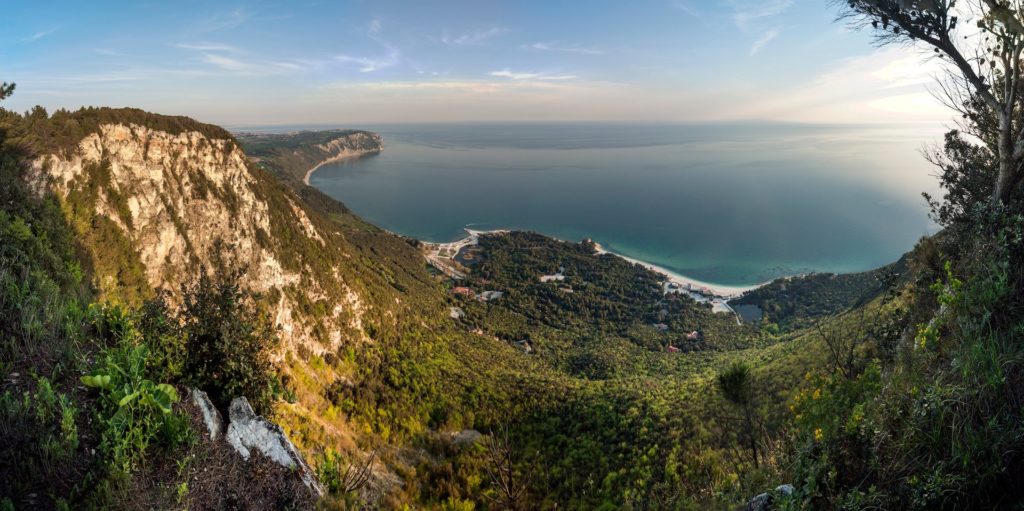
The most followed opinion is that mount Conero owns its name to a plant of the Mediterranean vegetation, the strawberry-tree, from whose fruits and flowers an excellent rosé wine and honey are produced respectively. Seen from the sea, it appears majestic with its cliffs and many sentries. On the promontory lies the natural park of Conero, accessible through paths where one can discover the rich local flora and fauna. Since ancient times, many legends have been generated by this peculiar place, all of them tied to tragic events, due to which the mountain is also called “Conero of mysteries”. The promontory stretches over the cities of Ancona, Sirolo, Numana and Camerano. Due to the marine erosion, it dives with steep slopes into the sea; the descent is much softer on the inland side. The top area is covered with woods and on one of the surrounding uplands lies the borough of Poggio. Other nearby hills host such charming villages as Montacuto and Varano.
Montefalcone Appennino – Looking west, to the Sibillini mountains
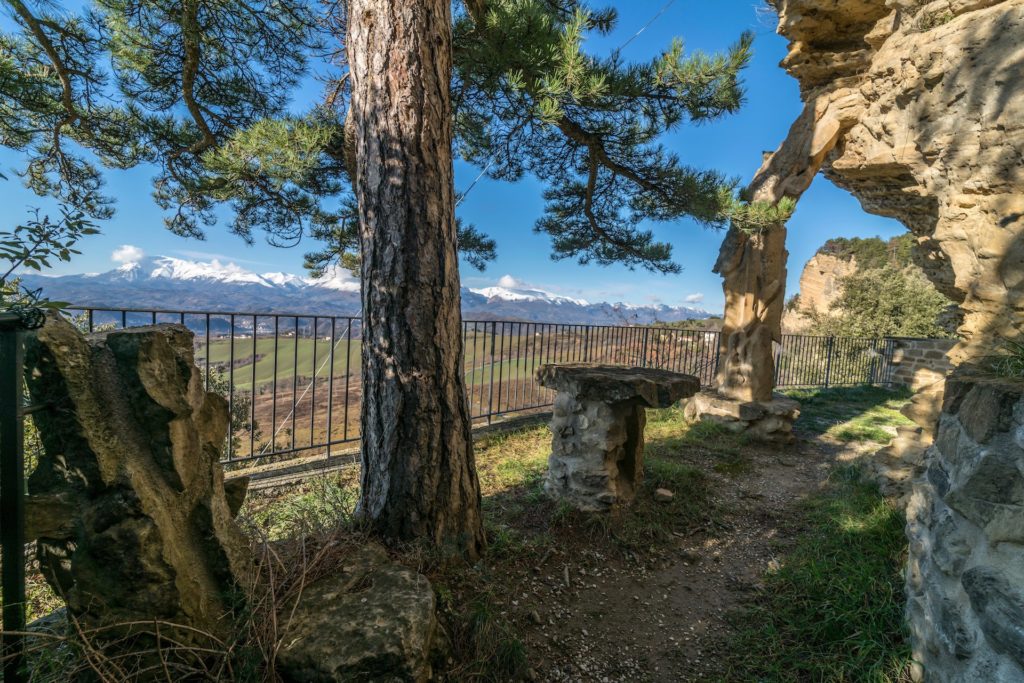
Montefalcone Appennino, a village in the province of Fermo, sits on a high cliff, a rock spur more than four million years old, which is its most relevant characteristic. It offers a sight of incomparable beauty encompassing the whole range of the Sibillini mountains. Set as it is in a green environment, it is a charming place. Remarkable is the Tronelli garden, which is crossed by winding paths which climb up the cliff in the middle of a rich and variegated vegetation. The Farfa castle, characterized by a single tower, raises in all of its magnificence over the highest side of the hamlet; from there, in clean days, breathtaking landscapes capture the visitors’ gaze. In October, the alleys are crowded with events animated by street artists and markets of typical and artisanal products. This is the most appreciated chance to admire the charming glimpses offered by the hamlet, especially sought for by lovers of photography.
Cupra Alta – Marano – The middle ages upon the sea
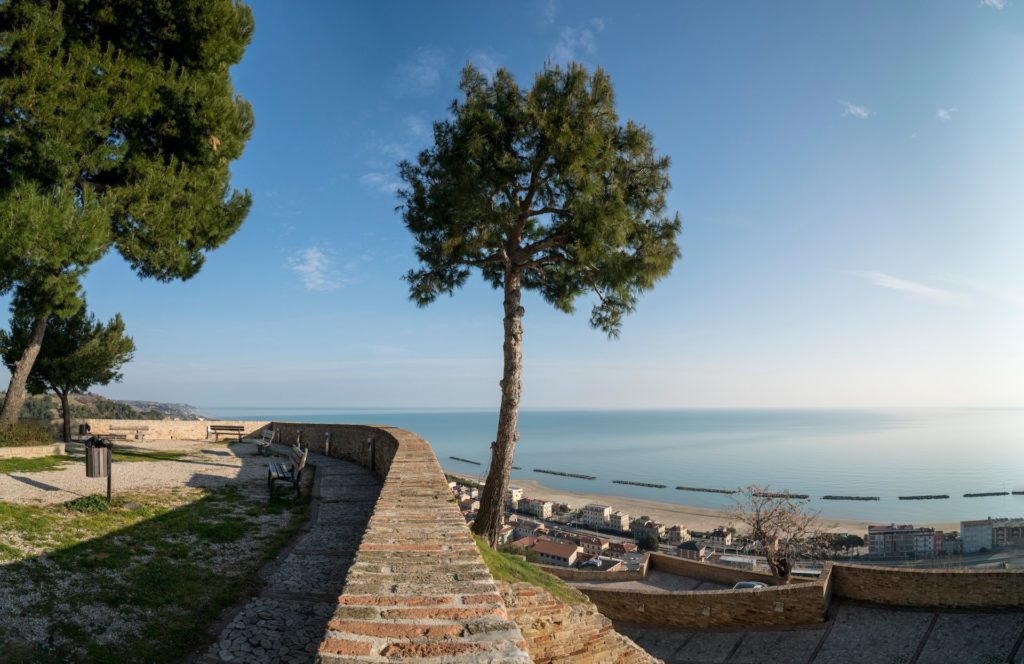
Cupra Marittima is a small town whose origins date back to a remote time. It has got a Romanic past, still visible in its architectonic structure. It was destroyed In the 9th century, rebuilt on its current location in the middle ages with the name of Castrum Maranum and finally renamed as Marano. It enjoys a charming panorama which gets lost at the horizon into the beautiful underlying Adriatic sea, whose coast is shaded by palm trees and coloured by oleanders. Marano is in fact the heart of the town raising steeply from the sea. As much suggestive are the vestiges of St. Andrew Castle, which overhang the sea too. The castle has got both an archaeological Park, where many findings coming from excavations can be admired, and the remains of an ancient temple consecrated to goddess Cupra. Other proofs of so rich a history are many Romanic churches in the high side of Cupra. Ancient palaces, towers filled with history and suggestive alleys, adorned with balconies filled with flowers, add to the beauty of this charming place.















